The first flushes of fall bring along one of the season’s most iconic ingredients: winter squashes. While both winter and summer squashes are members of the gourd family and are native to the Americas, compared to summer squashes, winter squashes have a more prominent taste and denser texture (with the exception of the long strands of the spaghetti squash).
Don’t be intimidated by the sturdy appearance and thick skins; these squashes have a nutty taste that complements fall flavors to perfection, and while varieties are available year-round, the widest selection is found during fall and winter. Read on for some of our best tips for working with winter squashes, plus simple and delicious ways to prepare them from the Williams-Sonoma Test Kitchen.
Winter Squashes: Everything You Need to Know
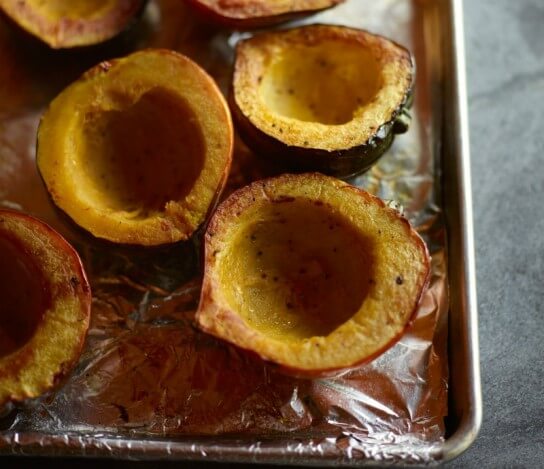
Acorn Squashes
What to Look For
When selecting a squash, look for one that’s firm, unblemished and feels heavy for its size.
Varieties
From pumpkin to acorn, there are dozens of different varieties, each with its own unique flavor and texture but always with that hint of nutty sweetness we love.
- Acorn: About 6 inches in diameter, the acorn squash has a dark green, ribbed shell and orange flesh.
- Banana: With peach-colored skin and orange flesh, the banana squash is shaped like its namesake, although it can grow several feet long. It is often sold cut into pieces.
- Butternut: Large, usually a foot long or more, with a beige skin and orange-yellow flesh, the butternut is identifiable by the round bulb at one end. It has a flavorful, dense flesh and is especially good for baking and pureeing.
- Delicata: A squash with green-striped yellow skin and yellow flesh, the delicata tastes a bit like a sweet potato. It is about 3 inches in diameter and 6 to 8 inches long.
- Golden Nugget: This squash resembles a small pumpkin about 4 inches in diameter.
- Hubbard: Weighing 10 pounds or more, the Hubbard has yellow flesh and gray-green, blue or dark green skin with small bumps. It makes an excellent puree that is a good substitute for pumpkin in pies.
- Kabocha: This squash, with its bright green skin marked with paler green stripes, has pale orange flesh. It usually weighs 2 to 3 pounds and may be substituted for acorn squash in recipes.
- Pumpkin: Pumpkins include field and cooking varieties. For cooking, seek out small, sweet varieties with a thick flesh and a fairly small seed cavity, such as Sugar Pie, Baby Bear or Cheese pumpkins. Field pumpkins have a fibrous flesh that is not good for cooking; reserve them for jack-o’-lanterns! Learn more about working with pumpkins here.
- Spaghetti: Roughly the shape and size of a football, the spaghetti squash has bright yellow skin. The cooked flesh forms long, thin strands when pulled from the shell with a fork — thus its name. Spaghetti squashes should be baked whole, then halved and their strands pulled out; serve like pasta.
- Sweet Dumpling: Actually an Asian gourd about 4 inches in diameter, the sweet dumpling has a very flavorful flesh and can be cooked and eaten like a winter squash. It is best when fully mature, its skin yellow with dark-orange stripes.
- Table Queen: Resembling an acorn squash in size and shape, this variety, also known as a golden acorn, has a bright orange shell and sweet, mild-tasting flesh.
- Turban: This exotic-looking specimen has a topknot and multihued skin in oranges, yellows and greens. It comes in varied sizes and shapes.
Prepping
Cut long-shaped squash in half lengthwise using a large, sharp chef’s knife. Round ones can be more easily cut into thick wedges. With a large metal spoon, scoop out the seeds and strings and discard. If the skin needs to be removed before cooking, use a sharp vegetable peeler or paring knife and peel it away carefully.
Storing
Cut winter squashes may be kept in a plastic bag in the refrigerator for up to one week; whole winter squashes may be kept for months in a cool, dark place.
Simple Preparations
Winter squashes can be baked whole or in halves, slices or cubes; or, they may be cubed or sliced, then steamed or simmered and pureed. Small squashes, such as acorns and golden nuggets, are the perfect size for halving, stuffing and baking. Large ones like butternuts may be sliced and baked, or cut into pieces, then cooked and pureed. Sliced or cubed squash is also good in soups and stews or glazed and baked. All winter squashes are delicious roasted with oil or butter and perhaps a drizzle of honey or maple syrup (learn our technique for roasting a winter squash). Other dishes that highlight their sweet flavor are creamy soups, filled pastas, spicy curries and long-cooked stews. To stuff and bake winter squash, choose a small squash, such as an acorn, that will yield two servings. For pureeing and cubing, select a larger squash with more meat, such as butternut.
Spaghetti Squash “Pasta”: Drizzle halved, seeded spaghetti squash with olive oil and season with salt and pepper. Roast until tender. Scrape squash with a fork to form “noodles.” Toss with melted butter, chopped parsley and grated parmesan.
Stuffed Acorn Squash: Combine sautéed diced onions and celery with cooked wild rice and brown rice, dried cranberries and chopped pecans and parsley. Halve and seed acorn squash. Drizzle with olive oil and sprinkle with brown sugar, salt and pepper. Roast at 450°F until tender, stuffing with rice mixture halfway through roasting time, about 45 minutes total.
Butternut Squash Soup with Brown Butter: In a Dutch oven, sauté diced onion, celery and carrot with minced garlic. Add diced butternut squash, stock and chopped thyme and sage. Simmer until squash is tender. Puree soup until smooth and season with salt and pepper. Drizzle with brown butter and garnish with fried sage leaves.
Kabocha Squash Stuffed with Lamb and Currants: Cut squash in half; scoop out seeds. Saute diced onion in olive oil; add ground lamb, cumin and cardamom and saute until browned. Fold in cooked rice, currants and pine nuts. Fill squash halves with lamb mixture; place in oiled baking dish. Roast at 375°F until squash is tender, 40 to 50 minutes.
Roasted Acorn Squash with Chipotle: Cut acorn squash into 1-inch wedges; toss with olive oil, minced chipotles, a touch of maple syrup, salt and pepper. Place squash on nonstick baking sheet; roast at 400°F, turning squash wedges over once, until tender, 45 to 60 minutes. Toss with toasted pecans.
Butternut Squash and Sage Risotto: Saute 1 chopped onion in 3 Tbs. olive oil until softened. Add 1 cup Arborio rice; stir 3 minutes. Add 1/2 cup white wine; stir until absorbed. Add warm chicken broth 1/2 cup at a time, stirring constantly, until each portion is absorbed, before adding more. When rice is tender, fold in 2 cups cooked diced butternut; sprinkle with grated Parmesan cheese and top with fried sage leaves.
Recipes
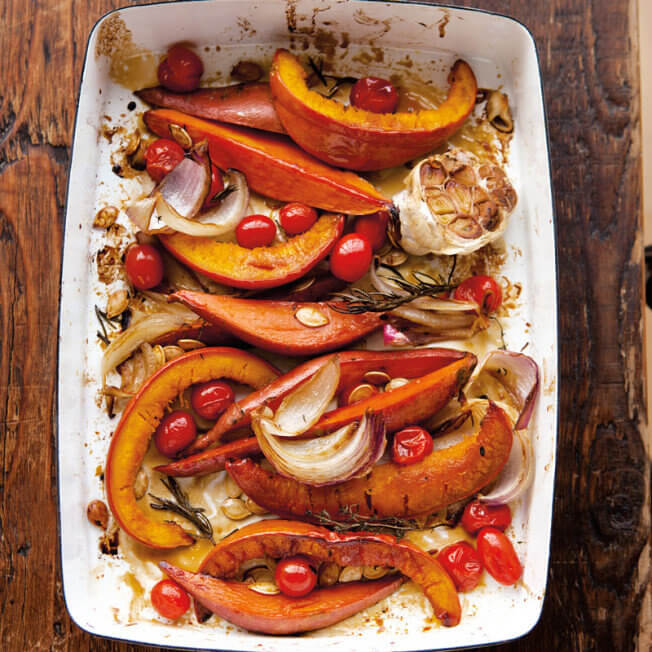
It might sound strange at first, but if you’ve never combined maple syrup and olive oil, as called for in this recipe for roasted pumpkin with sweet potatoes and cherry tomatoes, you’re in for a pleasant surprise. This also makes for a lovely vegetarian main course.
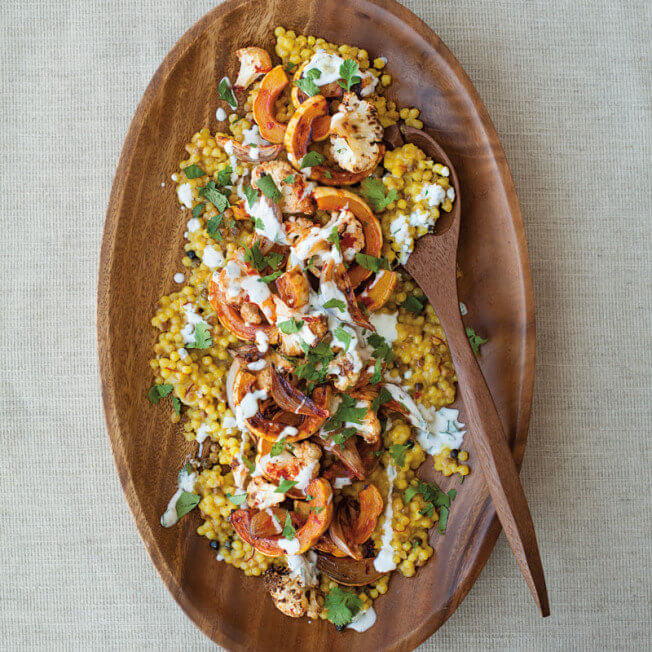
Delicata squash is the star of this North African-inspired dish, which also features cauliflower florets and harissa, a fiery chile-and-spice paste. The vegetables are served on fregola, toasted pasta spheres from Sardinia. If you can’t find fregola, you can also serve this dish over Israeli couscous or another small pasta shape such as orzo.
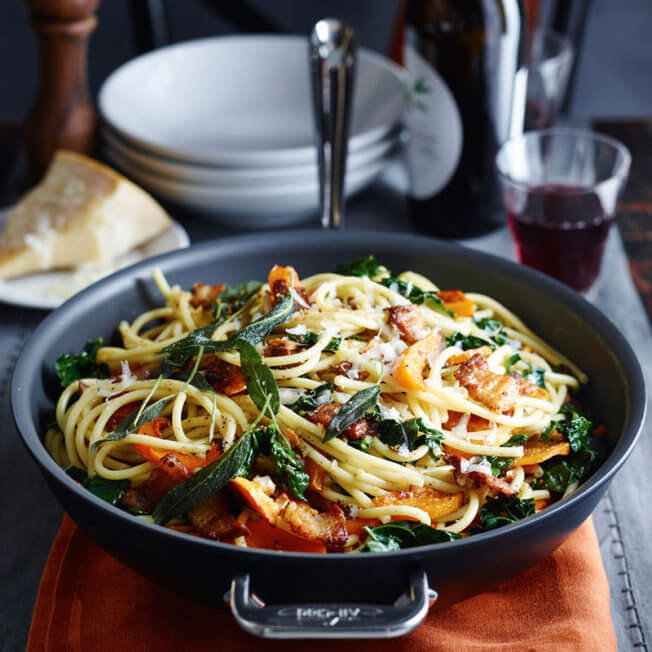
For a filling and satisfying fall meal, try our test kitchen’s take on bucatini, a recipe that combines kabocha squash with wilted kale and bits of bacon.
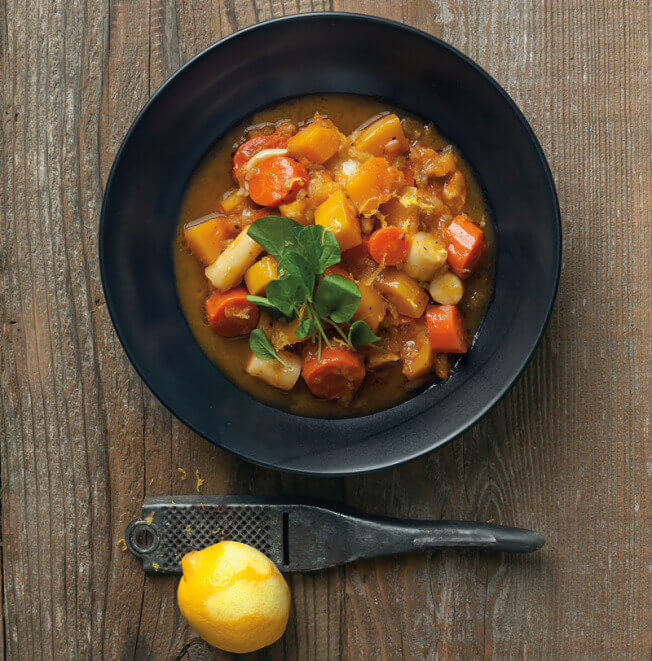
Butternut squash adds heft to a warming winter stew alongside onions, carrots and parsnips.
Find more tips and recipes for peak-season produce here!

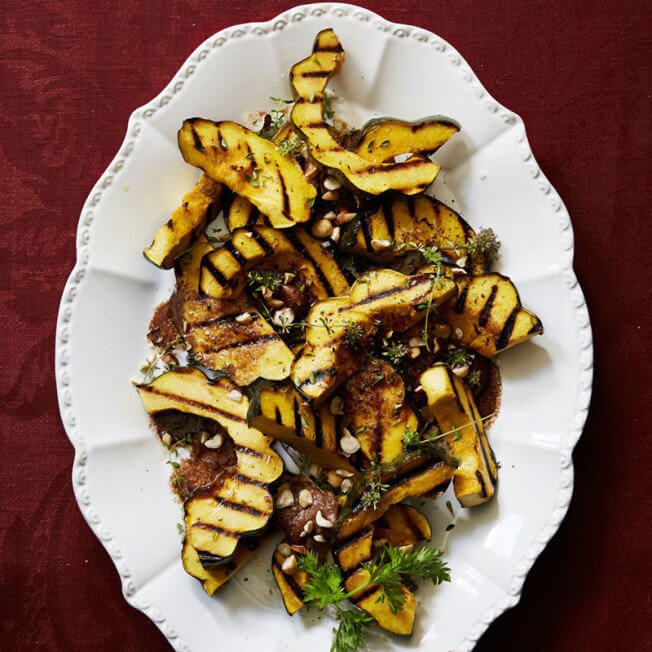
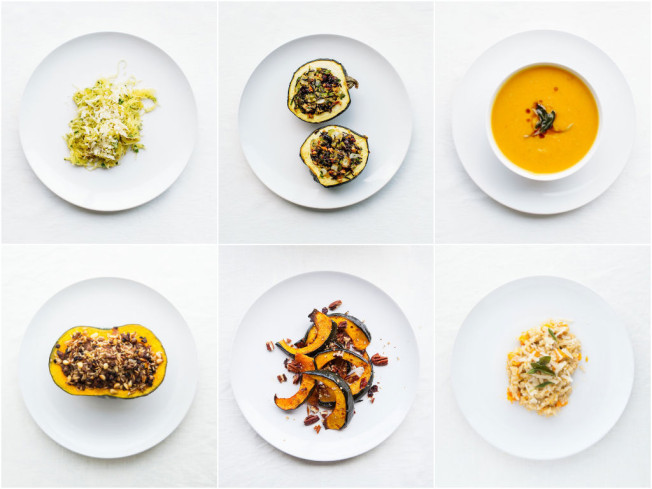
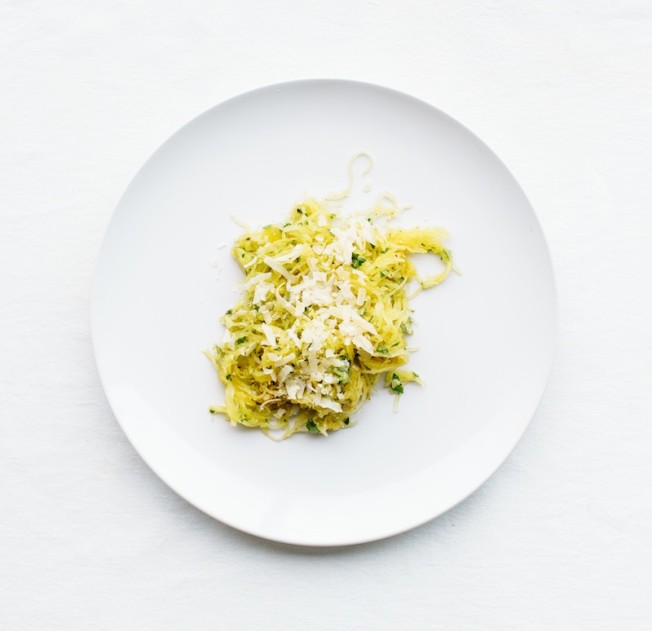
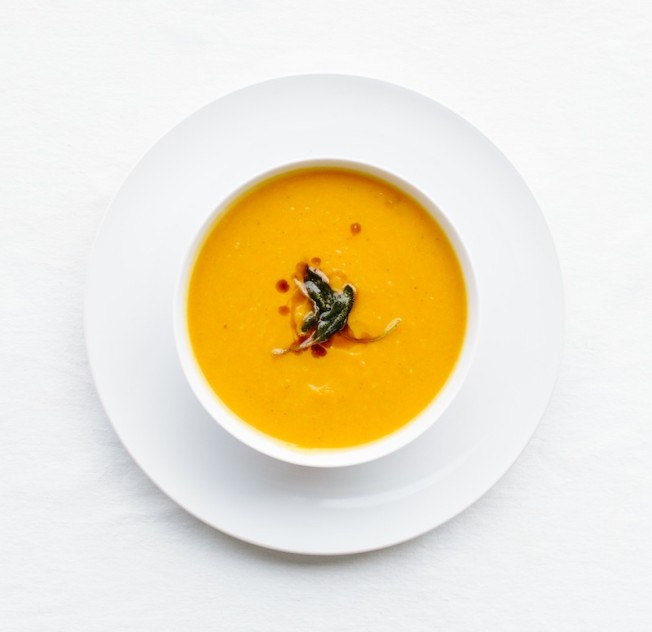
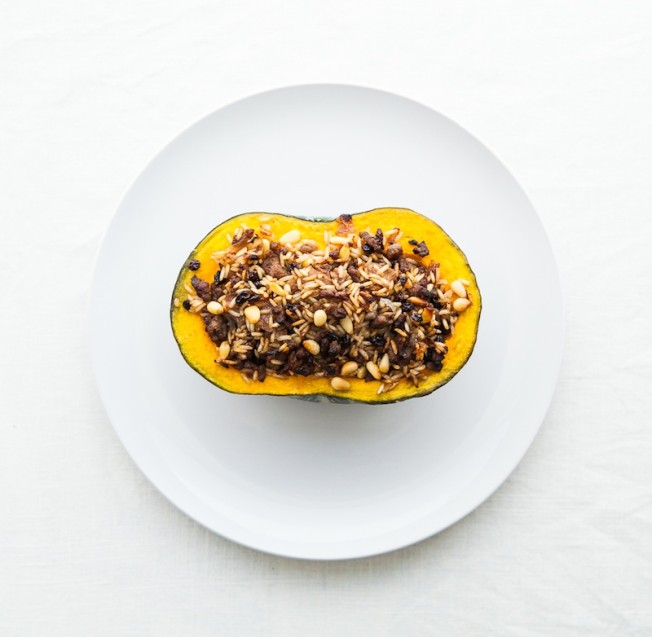
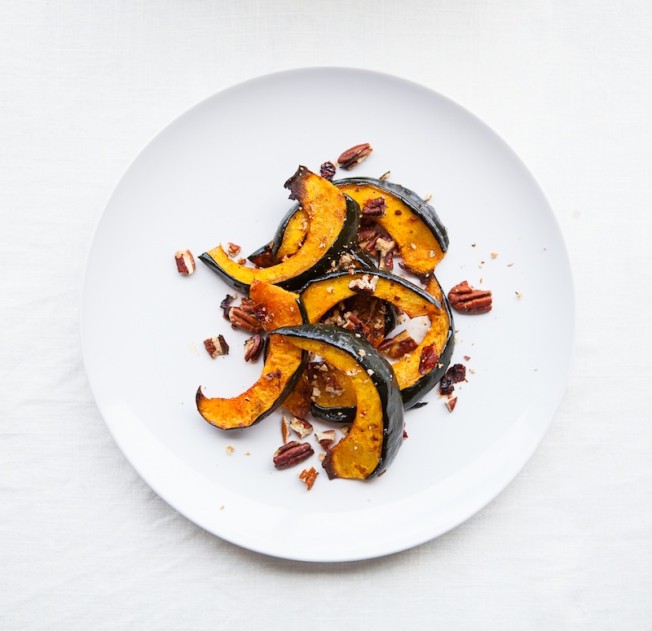
3 comments
thanks for such great recipes
How much broth should be added for the butternut squash risotto recipe?
Hi Jennifer, you’ll need about 3 cups of stock for the risotto. We’d recommend starting with a little less, then adding as needed.